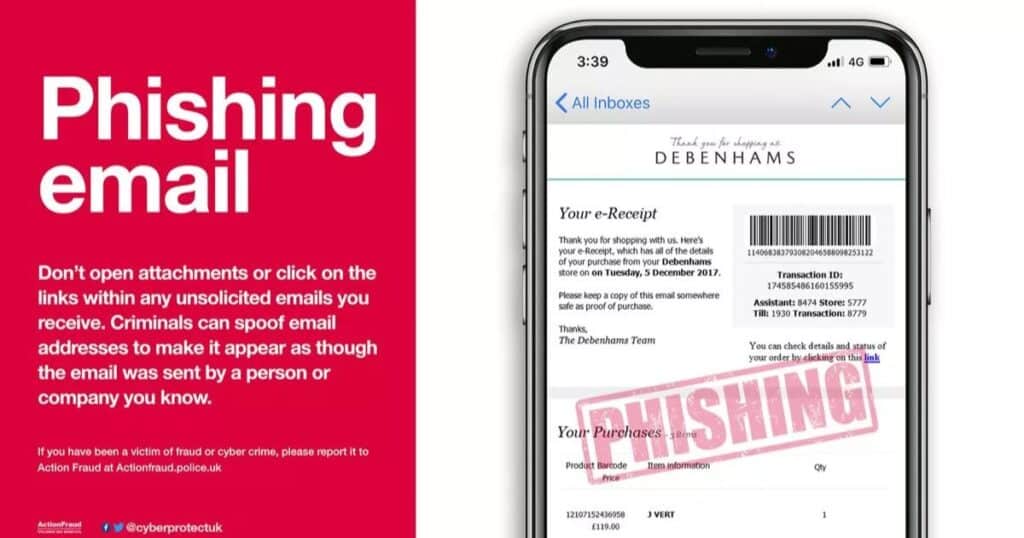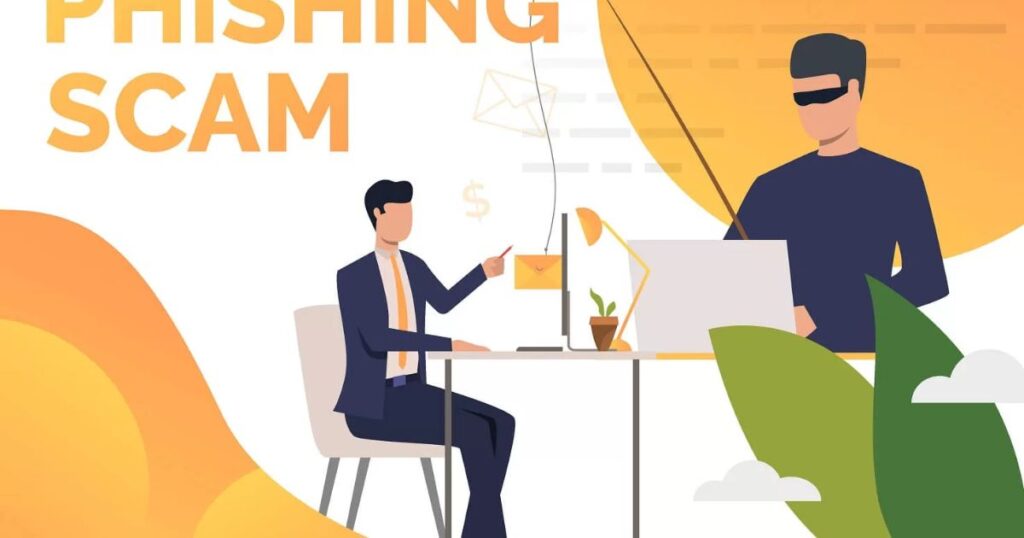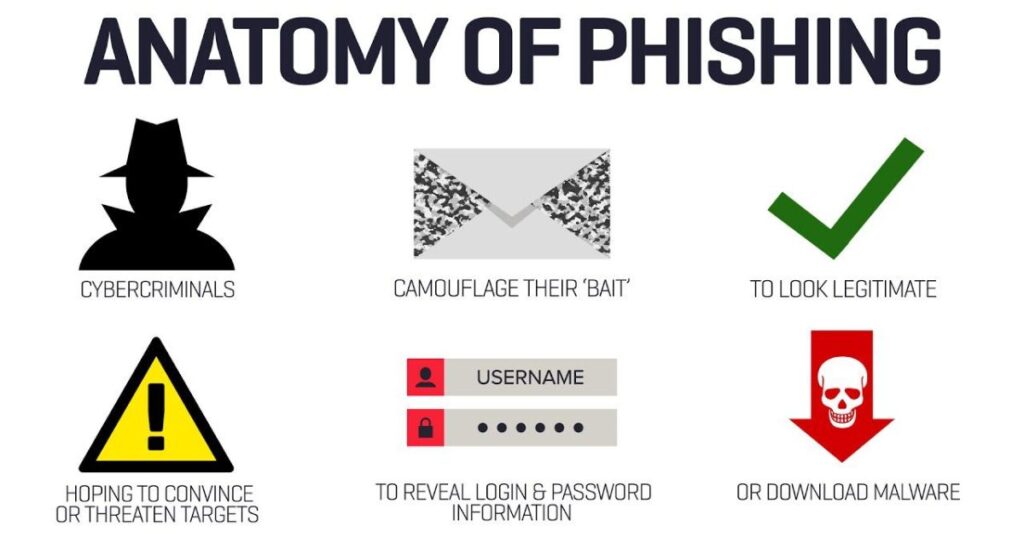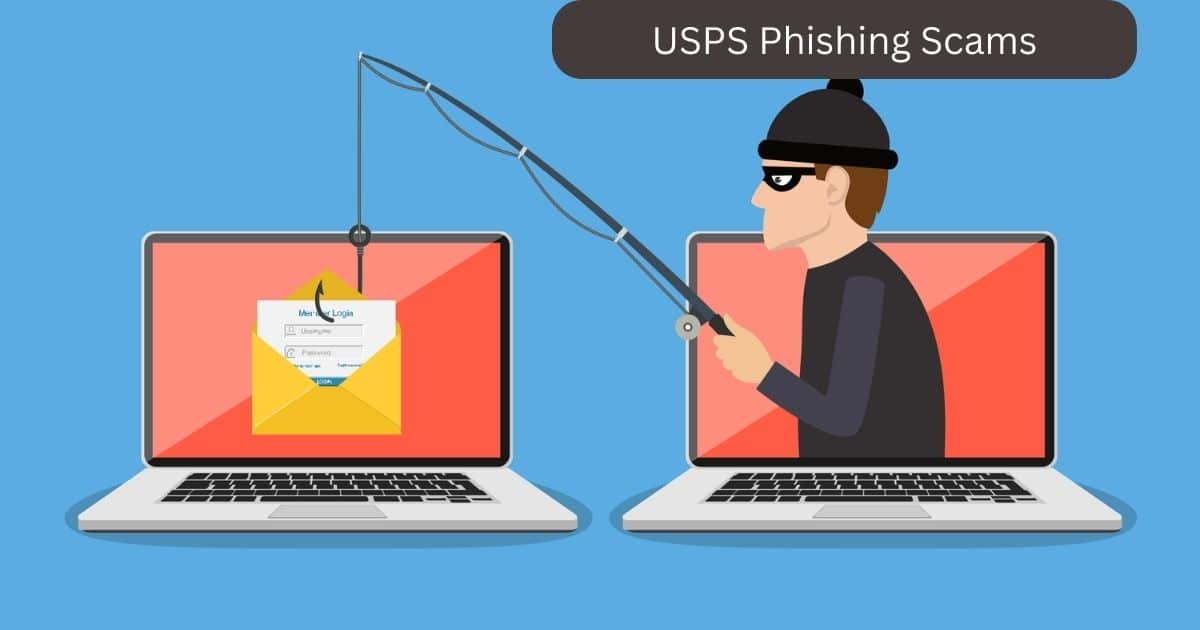In today’s digital age, phishing scams have become a pervasive threat, targeting individuals and organizations alike. One particularly deceptive scam involves impersonating the United States Postal Service (USPS), a trusted entity that many people rely on for their postal needs.
These scams are designed to steal sensitive information by tricking recipients into believing they need to take immediate action regarding a package or delivery. Understanding how these scams operate and knowing the signs to look out for is crucial in protecting yourself and your personal information from malicious actors.
This article will help you understand what the USPS phishing scam is, how to recognize it, and how to protect yourself from becoming a victim.
What is Phishing?

Definition of Phishing
Phishing is a type of cybercrime where scammers pose as legitimate organizations to steal sensitive information. They often use emails, text messages, or fake websites to trick people into providing personal data like passwords, credit card numbers, and Social Security numbers. The term “phishing” is derived from “fishing,” as scammers bait their victims using deceitful tactics.
How Phishing Works
Phishing typically involves sending deceptive messages that appear to come from trustworthy sources. These messages often contain links to fake websites designed to look like legitimate ones. Once you enter your information on these sites, it goes straight to the scammers, who can then use it for fraudulent activities. Phishers also sometimes use malicious attachments that, when opened, install malware on your device to steal information directly.
The USPS Phishing Scam
What is the USPS Phishing Scam?
The USPS phishing scam is a type of phishing attack where scammers pretend to be the United States Postal Service. They send fake emails or text messages claiming there is an issue with a package delivery or that you need to verify your address. These scams play on the trust and urgency associated with package deliveries, especially in the age of online shopping.
Common Tactics Used in the USPS Phishing Scam
- Fake Delivery Notifications: Scammers send messages saying a package delivery failed and you need to click a link to reschedule. This often creates a sense of urgency, pushing recipients to act quickly without verifying the message’s legitimacy.
- Verification Requests: Messages may ask you to verify your address or payment details. These requests can look very official, often using USPS logos and branding to appear credible.
- Fake Tracking Numbers: Some emails include tracking numbers that lead to phishing websites. These websites might look almost identical to the official USPS site, making it difficult to spot the difference at first glance.
How to Recognize a USPS Phishing Scam

Check the Sender’s Email Address
One of the first signs of a phishing email is the sender’s email address. Phishing emails often come from addresses that look similar to official USPS emails but have slight differences, such as misspellings or unusual domains. For example, instead of “@usps.com,” it might be “@uspsdelivery.com” or “@usps-service.com.”
Look for Generic Greetings
Legitimate USPS communications usually address you by your name. Be cautious of emails starting with generic greetings like “Dear Customer” or “Dear Sir/Madam.” Scammers often use these greetings because they don’t have access to your personal information.
Watch Out for Urgent Language
Phishers use urgent language to create panic and prompt quick action. Emails that demand immediate action, such as “Your package will be returned if you do not respond within 24 hours,” or threaten consequences, are often scams designed to make you act without thinking.
Examine the Links
Hover over any links in the email without clicking them. This action will display the actual URL the link points to. If the URL looks suspicious, doesn’t match the official USPS website, or contains strange characters or domains, it’s likely a phishing attempt.
Beware of Attachments
USPS rarely sends attachments in their emails. Be wary of any email with an unexpected attachment, as it might contain malware. Even if the attachment appears to be a PDF or other common file type, it could still be dangerous.
How to Protect Yourself from USPS Phishing Scams
Be Skeptical of Unsolicited Emails
If you receive an unexpected email claiming to be from USPS, verify its authenticity before taking any action. You can do this by contacting USPS directly through their official website or customer service number, not through any contact information provided in the suspicious email.
Don’t Click on Links or Attachments
Avoid clicking on any links or downloading attachments from suspicious emails. Instead, go directly to the USPS website and check your account for any notifications or messages. This ensures you are using the correct site and not a fake one set up by scammers.
Use Multi-Factor Authentication
Enable multi-factor authentication (MFA) on your accounts where possible. This adds an extra layer of security by requiring more than one method of verification to access your accounts, making it harder for scammers to gain unauthorized access.
Keep Your Software Updated
Ensure your computer and mobile device software are up-to-date. Updates often include security patches that protect against malware and phishing attempts. Using outdated software can leave you vulnerable to attacks.
Educate Yourself and Others
Stay informed about the latest phishing scams and educate others, especially those who may be less tech-savvy. Sharing knowledge about how to spot and avoid phishing scams can help protect your community.
Use Anti-Phishing Software
Consider using anti-phishing software and browser extensions that can help identify and block phishing attempts. These tools can provide an additional layer of security by alerting you to potential scams.
Check URLs Carefully
When visiting websites linked in emails, check the URL carefully. Legitimate websites often have secure connections indicated by “https” and a padlock icon in the address bar. However, even this is not foolproof, so always verify the website’s authenticity through other means.
Also Read: Exploring The Counter-Strike 1.6 (2003) Game Icons Banners
What to Do If You Fall Victim to a USPS Phishing Scam
Report the Scam
If you receive a phishing email, report it to USPS by forwarding it to phishing@usps.gov. You can also report it to the Federal Trade Commission (FTC) at ftc.gov/complaint. Reporting these scams helps authorities track and shut down fraudulent operations.
Change Your Passwords
If you clicked on a phishing link or provided personal information, change your passwords immediately. Use strong, unique passwords for each of your accounts to prevent scammers from gaining access to multiple accounts if one is compromised.
Monitor Your Accounts
Regularly check your bank and credit card statements for any unauthorized transactions. If you notice anything suspicious, contact your bank immediately to address the issue and prevent further unauthorized activity.
Consider Identity Theft Protection
Consider signing up for an identity theft protection service. These services can help monitor your personal information and alert you to potential fraud. They can also assist in resolving issues if your identity is stolen.
Secure Your Devices
Ensure your devices are secure by running a full antivirus scan and removing any detected threats. This helps to eliminate any malware that may have been installed through the phishing scam.
Inform Your Contacts
Let your contacts know if your email or other accounts have been compromised. Scammers often use hacked accounts to send phishing emails to the victim’s contacts, so informing them can help prevent further spread of the scam.
Why USPS Phishing Scams are Effective

High Volume of Online Shopping
The rise of online shopping has made package delivery notifications commonplace, making it easier for scammers to blend in with legitimate communications. People are accustomed to receiving emails and texts about deliveries, so they may not immediately recognize a phishing attempt.
Trust in USPS
USPS is a trusted and familiar organization, which scammers exploit to make their messages seem more credible. People are less likely to question a message from a well-known entity like USPS.
Use of Official-Looking Graphics and Language
Scammers often use logos, graphics, and language that mimic official USPS communications. This attention to detail can make phishing emails look very convincing, even to the trained eye.
Emotional Manipulation
Phishing emails often play on emotions like urgency and fear to prompt quick action. By creating a sense of urgency or a fear of missing out on a package, scammers manipulate victims into responding without fully evaluating the message.
Long-Term Impacts of Falling for Phishing Scams
Financial Loss
One of the most immediate impacts of falling for a phishing scam is financial loss. Scammers can use stolen information to make unauthorized transactions, leading to significant financial damage.
Identity Theft
Phishing scams can lead to identity theft, where scammers use your personal information to open new accounts, apply for loans, or commit other fraudulent activities in your name. This can take years to fully resolve and can significantly impact your credit score and financial stability.
Emotional Distress
Falling victim to a scam can cause emotional distress, including feelings of violation, stress, and anxiety. The process of resolving the aftermath of a phishing attack can be time-consuming and frustrating.
Loss of Trust
Victims of phishing scams may experience a loss of trust in online communications and transactions. This can lead to increased caution and reluctance to engage in legitimate online activities, impacting daily life and work.
Preventative Measures for Businesses
Employee Training
Businesses should provide regular training to employees on how to recognize and respond to phishing attempts. This includes identifying suspicious emails and knowing the proper channels for reporting them.
Implementing Strong Security Policies
Having strong security policies in place, such as requiring multi-factor authentication and regular password changes, can help protect business data from phishing attacks.
Email Filtering
Use advanced email filtering solutions to block phishing emails before they reach employees’ inboxes. These solutions can identify and quarantine suspicious emails, reducing the risk of exposure.
Regular Security Audits
Conduct regular security audits to identify and address vulnerabilities in your systems. This proactive approach can help prevent phishing attacks and other security breaches.
Conclusion
USPS phishing scam is a sophisticated and deceptive method used by cybercriminals to exploit the trust and urgency associated with postal services. Recognizing the signs of a phishing attempt, such as suspicious email addresses, generic greetings, and urgent language, is essential in preventing these scams from succeeding. By taking proactive measures like avoiding clicking on suspicious links, using multi-factor authentication, and keeping your software updated, you can significantly reduce your risk of falling prey to these malicious tactics.
Ultimately, awareness and education are your best defenses against phishing scams. By staying informed about the latest scams and sharing this knowledge with others, you can help build a community that is better equipped to identify and avoid phishing attempts. Protecting your personal information and maintaining a healthy level of skepticism toward unsolicited communications can go a long way in keeping you safe in the digital world. Stay vigilant, report any suspicious activity, and always verify the authenticity of messages before taking action.








